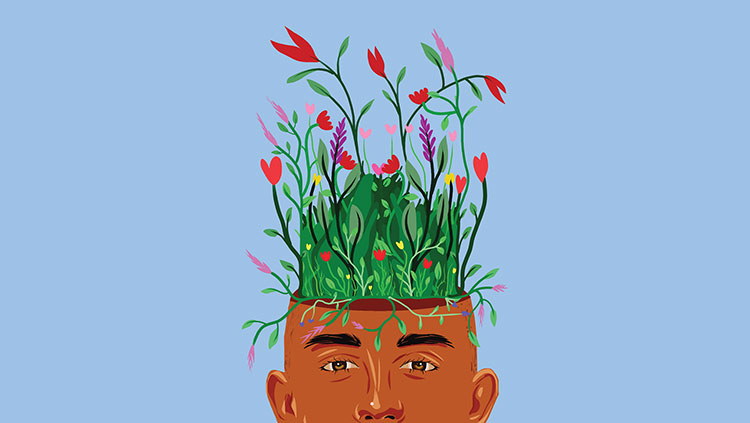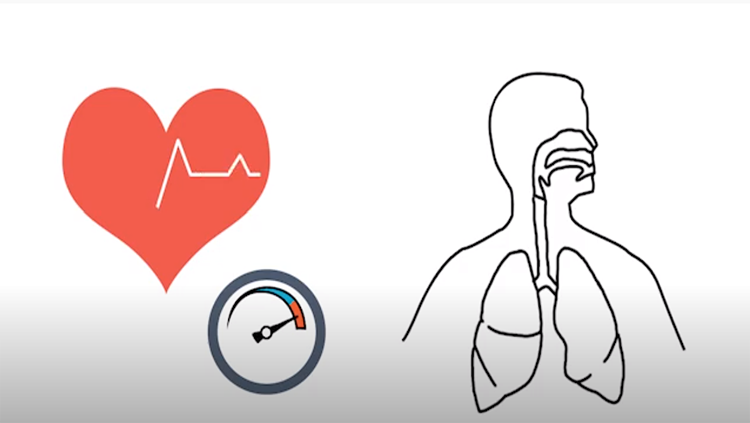
Women suffer depression and anxiety disorders at higher rates than men; a new study finds an interesting new explanation for this. Unwholesome family life can alter development of threat-detection circuits in the brain of young girls, which persist into adulthood and predispose women to developing mood and anxiety disorders as adolescents and young adults. Boys are also negatively impacted by family stresses during childhood, but the lasting effects on their brain were seen in only one of two neural circuits controlling our response to threats, anxiety and fear.
Recent neuroimaging research in several laboratories has shown that wiring of a child’s brain is permanently altered by abuse and other stressful experiences early in life. The earliest research concerned children who were exposed to severe sexual abuse but more recently, seemingly less harsh experiences, such as verbal abuse from their peers in middle school, have been found to alter wiring of specific circuits in a child’s brain. Such children suffer greater psychological problems as adults that can be traced to the differences in brain circuitry. This new study by Ryan Herringa and colleagues at the University of Wisconsin followed development of a large group of children as they grow up, and finds that girls are especially vulnerable to maltreatment in childhood; moreover the maltreatment they experienced is comparatively subtle. Even maltreatment of children that does not raise to the level of criminal abuse alters development of threat detection circuits in the brains of boys and girls. Thus the young brain is very sensitive to stresses in family life.
Threat detection involves interaction between three brain regions. The amygdala, deep inside the brain, detects novelty and danger in the environment and learns quickly to respond to and avoid threats. The amygdala thus regulates our emotions of anxiety and fear. The hippocampus, located near the temples of the skull, is crucial for mapping our environment, forming memories of events, and learning the context of when experiences, including threats and stresses, are likely to be experienced. The prefrontal cortex, beneath our forehead, is the higher-level cognitive region of the brain that can evaluate complex information to make decisions and direct our attention and behaviors appropriately. This part of the brain is the last region to develop and it is not fully developed until the early twenties.
The new study found that boys experiencing family stresses early in life had weaker connections between the prefrontal cortex and the hippocampus, but girls who experienced the same stresses developed weaker connections between the prefrontal cortex and both the hippocampus and amygdala. Girls thus suffer a “double hit.” These changes in brain circuitry correlated with the level of psychological problems experienced in later life. The differences in brain circuitry were measured by functional brain imaging while the children were in a brain scanner simply engaged in their own thoughts. This technique measures the brains “resting-state” connections, rather than highlighting specific parts of the brain that become activated by a particular stimulus.
The explanation for these differences between boys and girls seems to be that different brain regions develop at slightly different times in everyone and there are differences between the sexes. Stress and abuse impact development of brain circuits most strongly during the period when a circuit is forming and maturing. This is why traumatic events, for example combat experienced by military personnel, do not have the same effect. Since the hippocampus provides context, this enables a person to experience fear in the appropriate environment rather than being anxious and fearful everywhere. “Females may have greater fear/anxiety responses generally following maltreatmenbt experiences,” he observes, because they have reduced connection to the amygdala as well as hippocampus. One of the changes Herringa would expect in these children is that they would be more likely to suffer PTSD after traumatic experiences as adults. “Childhood maltreatment is a significant risk factor for adult PTSD,” he says, and these connections in the brain’s fear circuits are known to be involved in PTSD.
The changes in brain wiring caused by maltreatment in childhood seem to be the way the brain changes its wiring to cope with the hostile environment. “This could very well be adaptive in a stressful or threatening environment but may also come at a cost of increasing risk for anxiety and depression [as adolescents and adults],” Herringa explained in an e-mail interview. The new insights offer possible new treatments for anxiety and depression. “For example, a therapy involving contextual safety vs. threat learning could be helpful for both sexes,” Herringa says. This treatment would allow a person to realize that their feelings of anxiety and fear are not appropriate to normal situations. Both boys and girls showed decreased connectivity to the hippocampus, so therapies using context to reduce anxiety and fear could be helpful to both sexes.
References Herringa, R.J. et al., (2013) Childhood maltreatment is associated with altered fear circuitry and increased internalizing symptoms by late adolescence. Proc. Natl. Acad. Sci. USA Published ahead of print Nov. 4, 2013 http://www.pnas.org/content/early/2013/10/30/1310766110
Fields, (2010) Sticks and Stones--Hurtful words damage the brain, Psychology Today. http://www.psychologytoday.com/blog/the-new-brain/201010/sticks-and-stones-hurtful-words-damage-the-brain
Fields (2011) Rudeness is a neurotoxin. The Huffington Post. http://www.huffingtonpost.com/dr-douglas-fields/rudeness-is-a-neurotoxin_b_765908.html
Also In Childhood & Adolescence
Trending
Popular articles on BrainFacts.org


















